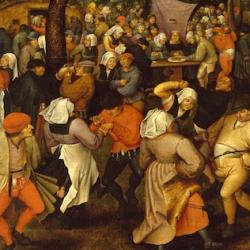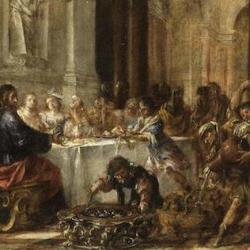Jesus’ trial before Pilate takes place near Passover, but it’s a Day of Atonement, as Barabbas is selected to go free and Jesus sent outside the camp bearing the sins of His people.
A student, Stephanie Beauchamp, points to another Day-of-Atonement theme in John’s account. Throughout the narrative, Pilate is the mediator between the Jews, who stay outside the Praetorium to avoid contamination, and Jesus, who is inside. In and out, in and out, Pilate is playing the role of a priest. Of course, everything is inverted. The clean Jews are outside, and the “priestly” character is a skeptical Roman governor. The Jews end up “outside”; despite their concern for purity, they don’t have access to the incarnate Glory in the Praetorium. In the end, they declare their devotion to Caesar instead of Yahweh; they become Gentiles.
This highlights the connection between Peter’s denial and that of the Jews. Peter is in the actual high priest’s court, and denies Jesus; the Jews, in the quasi-templar court of the quasi-priest Pilate, say “We have no King but Caesar.”















